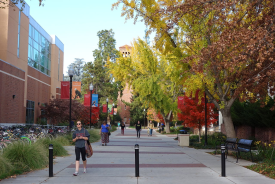Harvard And UM Researchers Successfully Recreate 'Time Crystals' By Princeton Scientists
ByResearchers from Harvard University and the University of Maryland were able to create "time crystals," which were envisioned by Princeton scientists. They recently reported in the journal "Nature" that they successfully created this type of unstable matter.
Shivaji Sondhi, a Princeton professor of physics, who worked on the study with Harvard researchers, said that they were able to discover the "essential physics" of how time crystals function, Phys.org reported. Moreover, they built on the initial study of Princeton scientists and studied the complex systems involved in the ins and outs of equilibrium of matter.
This is an interesting discovery since ordinary crystals like diamonds, quartz or ice are made up of molecules that are arranged into orderly three-dimensional patterns. Atoms in time crystals, however, are arranged in patterns not only in space but in time as well.
Moreover, these contain a pattern that repeats over time. One way for this to happen is when the atoms in the crystals move at a specific rate. If, for example, a time crystal of ice existed, all of its water molecules would vibrate at an identical frequency without any input from the outside world - meaning it does this while in its resting state.
Massachusetts Institute of Technology physicist Frank Wilczek came up with the concept of time crystals. He hypothesized that, since crystals break translational symmetry in space by assembling into rigid patterns rather than being spread out, there should also be crystals that break translational symmetry in time.
Harvard University theoretical physics graduate student Soonwon Choi, co-author of the study, told Live Science that they discovered a new state of matter. The publication noted that time crystals join other exotic states of matter namely: superconductors, quantum-spin liquids and superfluids.
The researchers used a diamond filled with one million nitrogen vacancy color centers, which are spots in the diamond's carbon crystal lattice where nitrogen atoms replaced carbon atoms. They used lasers and microwave radiation to periodically pulse these nitrogen vacancies. More details of the studies can be found here and here.
© 2025 University Herald, All rights reserved. Do not reproduce without permission.








